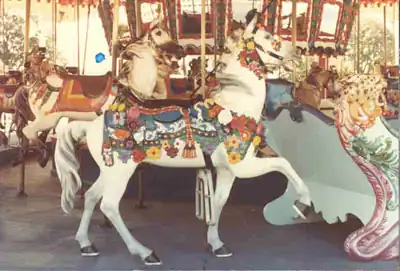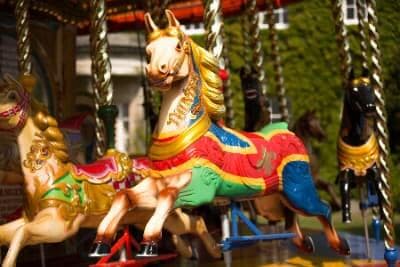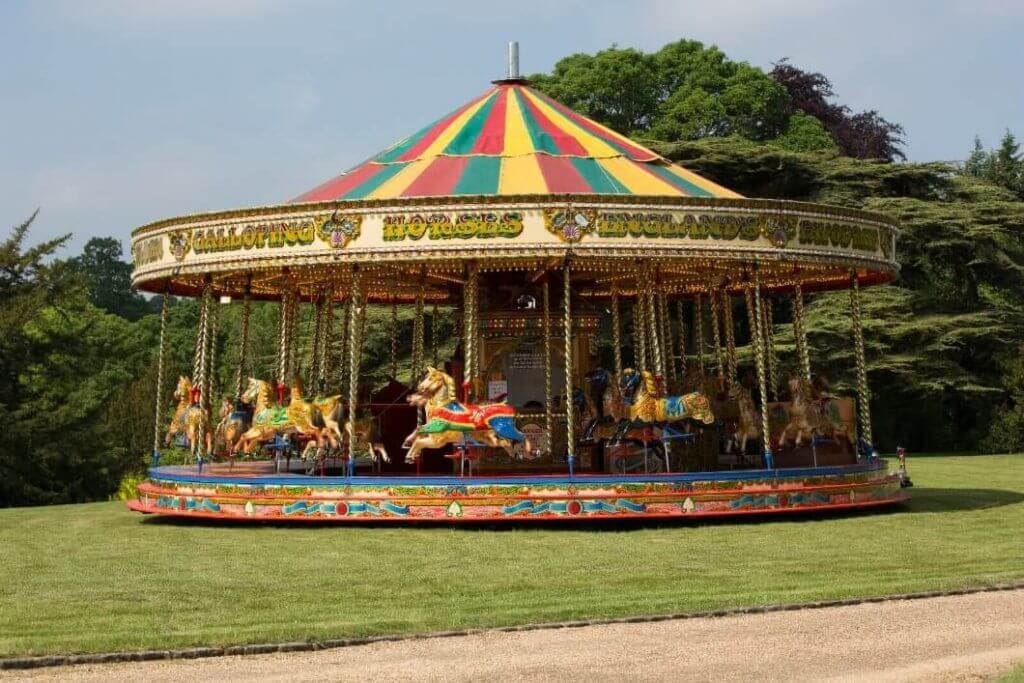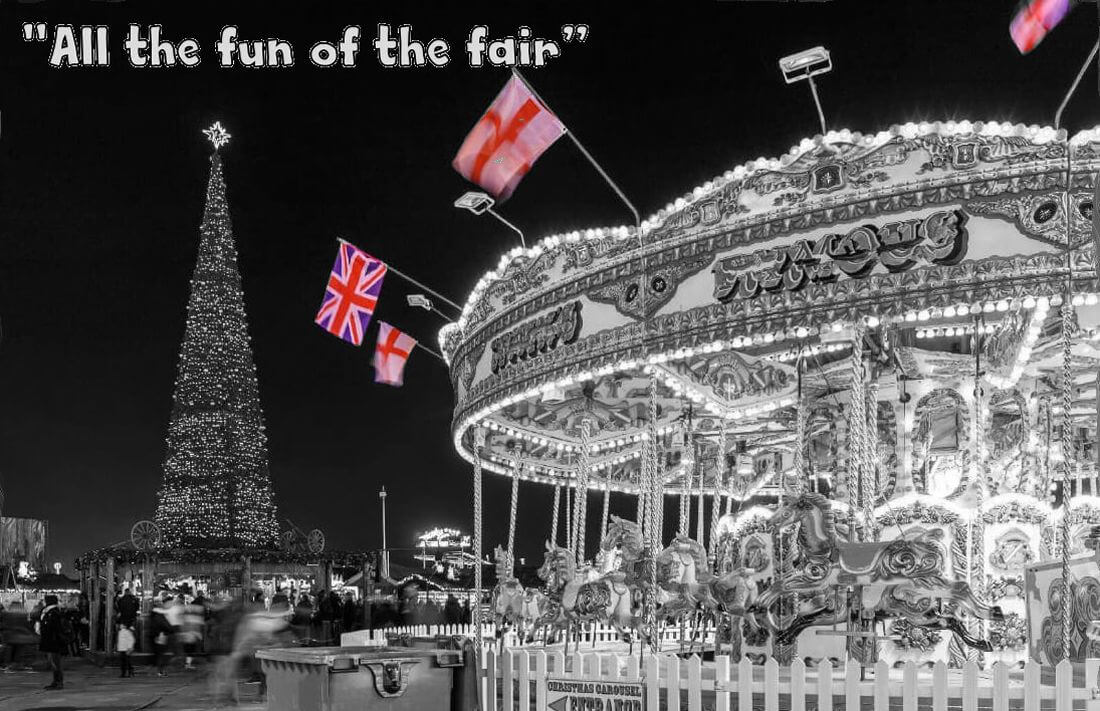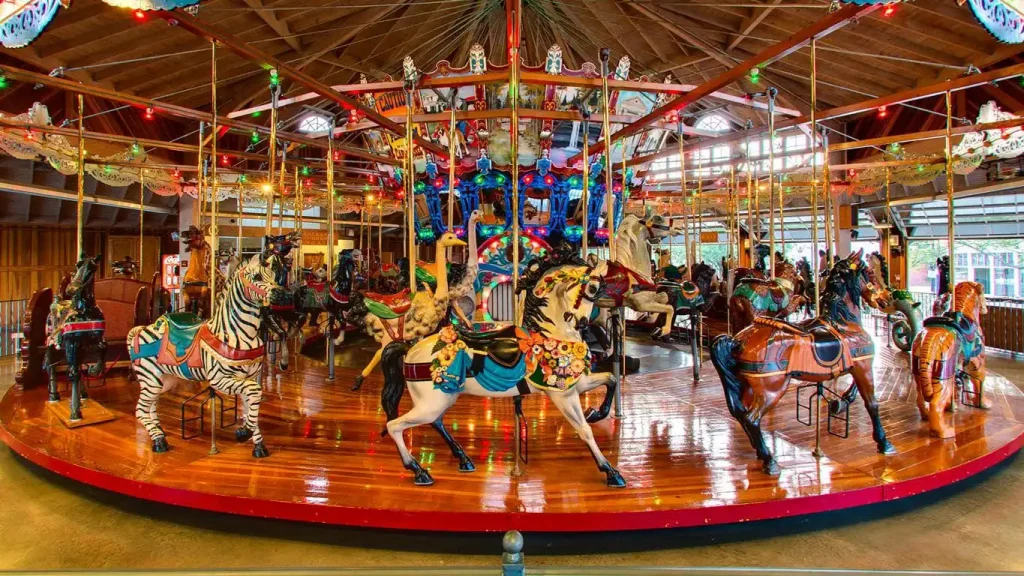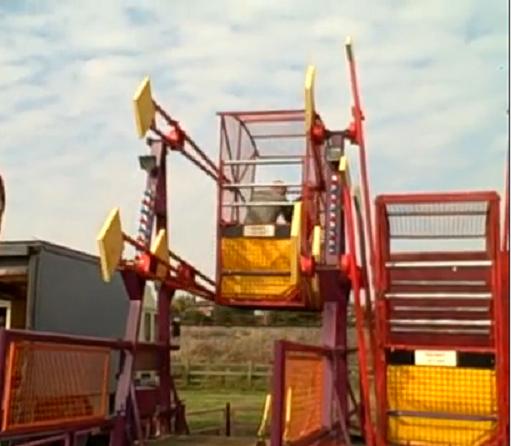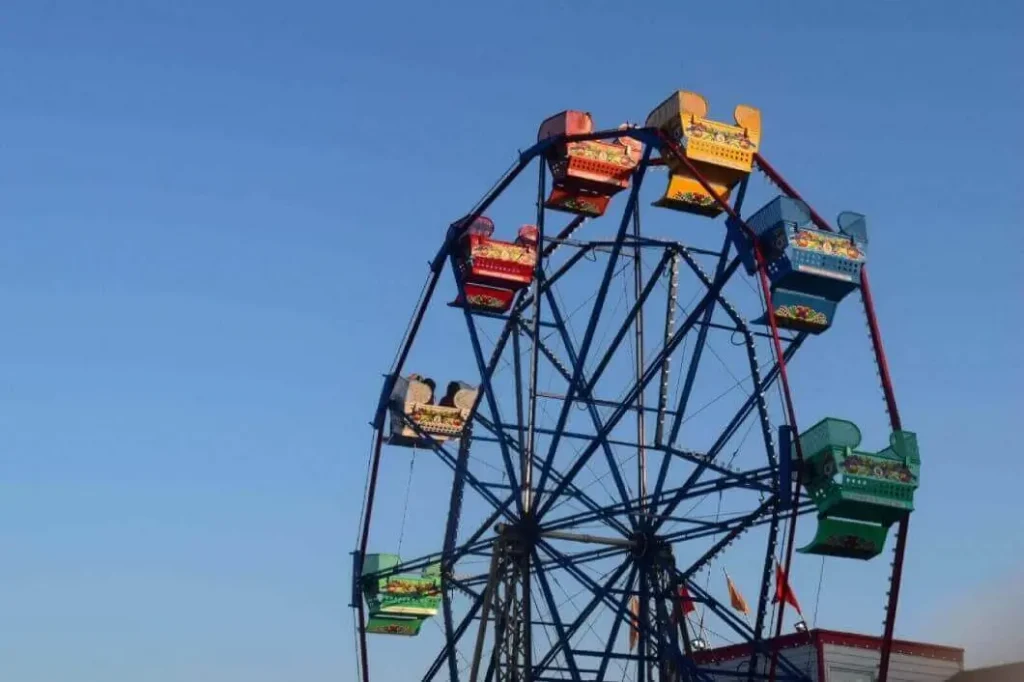The Carousel, History Of An Iconic Ride
Many of the rides still travelling on funfairs have been around for decades, in some cases over 100 years. Others are relatively new designs, but have still achieved iconic status. One such ride is the carousel, the first of the rides we are going to take an in depth look at.
Early History
Much of Europe and the Middle East have a long history of jousting. Knights would gallop in circles whilst tossing balls to each other, a demonstration of their skill and horsemanship. The actual word carousel takes its origins from the Italian Carosella meaning little battle, which was an exercise used by Arabian and Turkish horsemen to prepare for actual battle. essentially a training mechanism to prepare and strengthen the riders sword play.
Eventually as medieval jousting gave way to the cavelry era, this was replaced with demonstrations and spectacles that had the rides spearing suspended rings.
Eventually even the commoners began to play the game, and rudimentary carousels began to be set up at fairgrounds across Europe. An early make believe carousel with wooden horses was set up in Paris, at the Place Du Carousel for children.
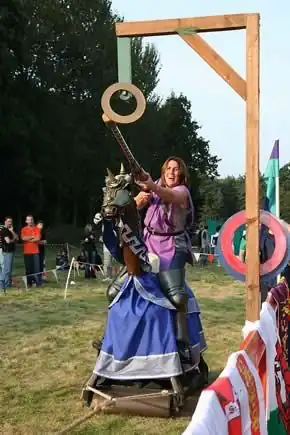
The Modern Carousel
The forerunner to the modern carousel, was what in the UK is termed a dobbie set. Much like a carousel, but with one important feature lacking. The horses didn’t have an up and down motion. They were either suspended on poles, or fastened to the platform, and though they would rotate in the same manner, they lacked the galloping. They also tended to be much smaller that the rides we are used.
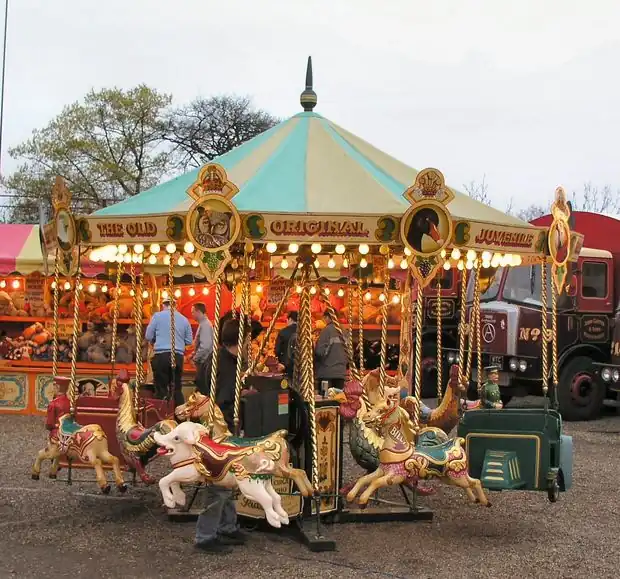
Then Came Steam
The first of the two breakthroughs that led to the ride we all know and love today came around 1861. Invented by a gentleman called Thomas Bradshaw, who built a ride that was powered by a steam engine. This allowed a much bigger structure, with crucially more riders. One newspaper of the time remarking that it moved with such impetuosity that the wonder was the riders not being shot off like cannonballs.
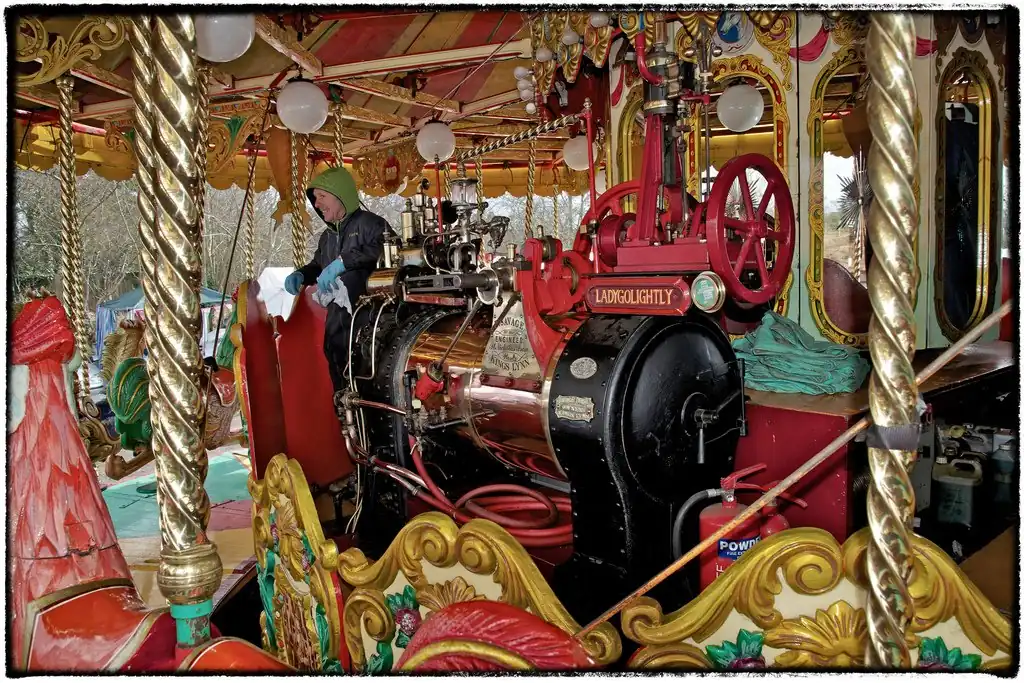
Then Came Frederick Savage
The final piece of the puzzle came from an English engineer. Frederick Savage was a builder of agricultural machinery. Who, for reasons unknown decided to branch out into the design and production of funfair rides.
By the 70’s (the 1870’s that is), he was exporting funfair attractions all over the world. He experimented with various designs, and at one point came up with the ‘Sea-On-Land’ a nautical themed attraction, that used an offset crank system to pitch and roll the boats on the roundabout.
When he took this new idea and married it to a steam powered carousel to give the horses the motion they lacked, he created what he called the platform gallopers. Steam powered organs were often installed into the centre of the ride to give it the classic carousel design, that isn’t that much changed today.
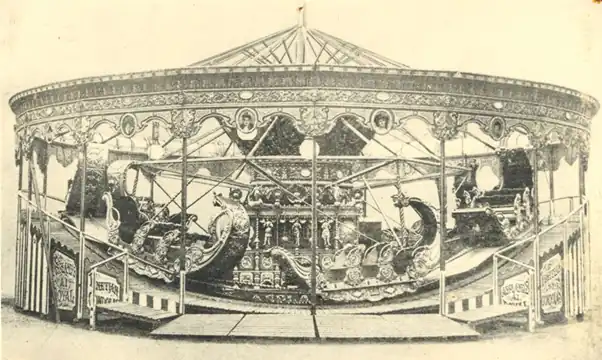
Our American Cousins
Across the pond, it was immigrants that developed the Carousel. Including Charles W.F. Dare from England and Gustav Dentzel of Germany. A number of differnent manufacturers appeared, all with differing styles, Looff had reaslitcally painted saddles, whilst the Coney Island style had elaborate jeweled saddles from the likes of Dentzel, Herschell’s and Spillman’s often having no saddles at all. Their machines tended to be large and elaborate, highly decorated affairs.
One curiosity is the direction of travel. In the U.K., a carousel, in common with most rotating rides moves in a clock wise motion. Whereas in the States and Europe it goes the opposite way.
